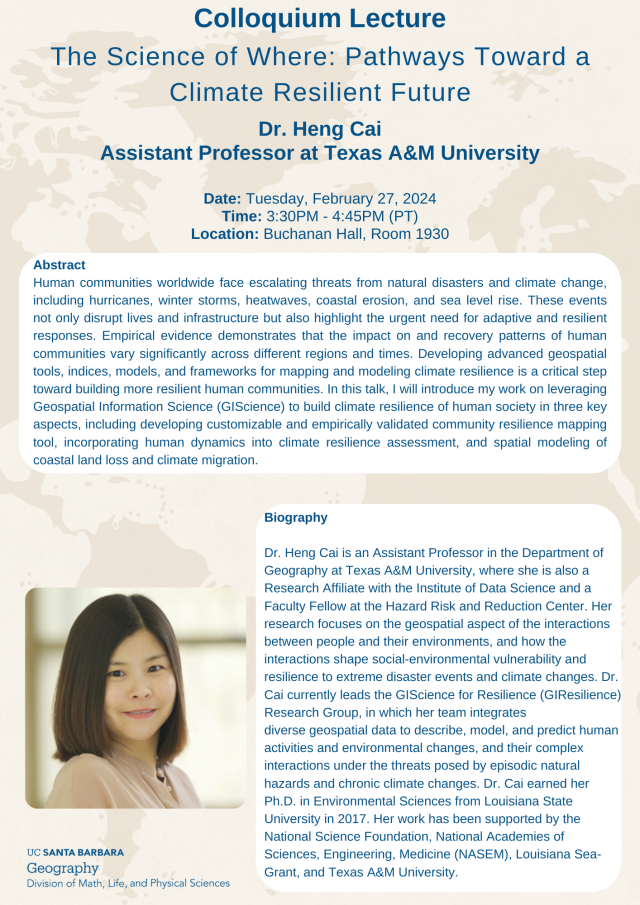Geography Colloquium Series - The Science of Where: Pathways Toward a Climate Resilient Future

Abstract
Human communities worldwide face escalating threats from natural disasters and climate change, including hurricanes, winter storms, heatwaves, coastal erosion, and sea level rise. These events not only disrupt lives and infrastructure but also highlight the urgent need for adaptive and resilient responses. Empirical evidence demonstrates that the impact on and recovery patterns of human communities vary significantly across different regions and times. Developing advanced geospatial tools, indices, models, and frameworks for mapping and modeling climate resilience is a critical step toward building more resilient human communities. In this talk, I will introduce my work on leveraging Geospatial Information Science (GIScience) to build climate resilience of human society in three key aspects, including developing customizable and empirically validated community resilience mapping tool, incorporating human dynamics into climate resilience assessment, and spatial modeling of coastal land loss and climate migration.
Biography
Dr. Heng Cai is an Assistant Professor in the Department of Geography at Texas A&M University, where she is also a Research Affiliate with the Institute of Data Science and a Faculty Fellow at the Hazard Risk and Reduction Center. Her research focuses on the geospatial aspect of the interactions between people and their environments, and how the interactions shape social-environmental vulnerability and resilience to extreme disaster events and climate changes. Dr. Cai currently leads the GIScience for Resilience (GIResilience) Research Group, in which her team integrates diverse geospatial data to describe, model, and predict human activities and environmental changes, and their complex interactions under the threats posed by episodic natural hazards and chronic climate changes. Dr. Cai earned her Ph.D. in Environmental Sciences from Louisiana State University in 2017. Her work has been supported by the National Science Foundation, National Academies of Sciences, Engineering, Medicine (NASEM), Louisiana Sea-Grant, and Texas A&M University.